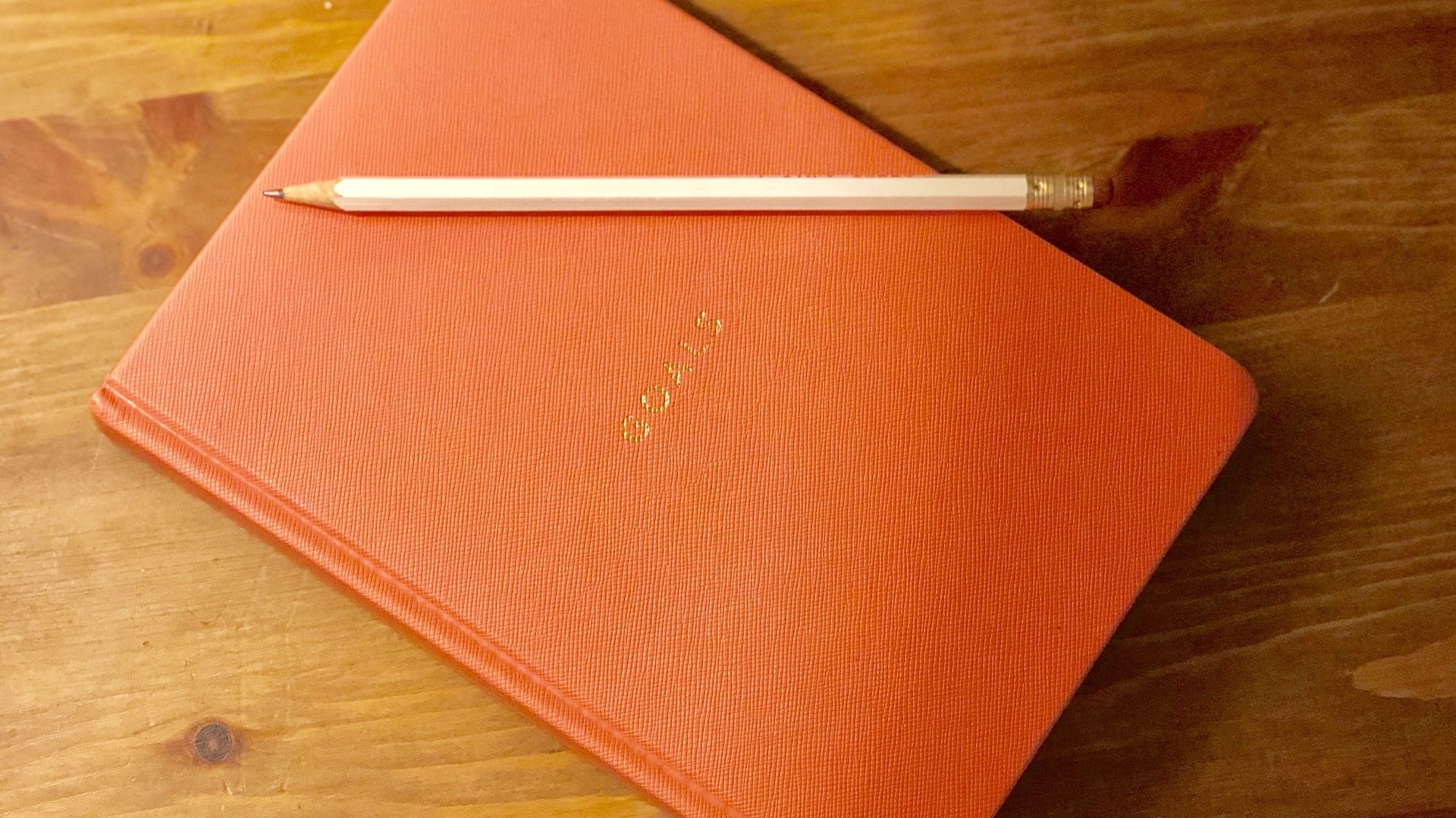The perfect gift for your anxious friend is a goal journal
If there’s one thing in this life that’s certain, it’s uncertainty.


If there’s one thing in this life that’s certain, it’s uncertainty.
Some people handle unpredictability well. I, however, am not one of those people. The idea of not knowing what is coming next is my own personal, anxious hell.
In some ways, anxiety is an advantage. From an evolutionary standpoint, it’s a tool that protects us from things that could cause harm. It allows us to predict worst-case scenarios, which helps us avoid them.
But like many previously vital evolutionary traits, anxiety can be overblown in today’s world. Many of us are lucky enough to not routinely face threats to our lives, but the feelings linger. In severe cases, anxiety merits medical treatment. Unfortunately, though, mild anxiousness every now and then is also a woefully normal part of our existence, like happiness hangovers.
The year 2018 has been full of gloomy apprehension, which has understandably roused all of our anxious tendencies. We endured a chaotic news cycle, solastalgia, and concerns of shifting demographics that will lead to a new wave of global health problems.
And then there’s all the routine, personal anxiety most of us feel. For me, it’s the question, “What am I doing with my life?” that strikes in the depths of the night while staring at the ceiling. I’ve enjoyed the freedom of making my own decisions as an adult, but I also feel like my choices have become more weighted with age. I’m more differentiated than I used to be. Instead of being an embryonic stem cell, which can grow into anything, I’m more of a somatic stem cell, which is limited in the kinds of tissue it can become. The fear of making the wrong choice—something that will set me up for some kind of amorphous failure in five to 10 years—feels heavier than it used to.
Helpful prompts
For my 26th birthday earlier this year, a friend sent me a notebook and some old-fashioned pencils. It was not an ordinary journal, as I expected—it was a goal journal. When I cracked open the pages for the first time, I found bits of it were already filled with prompts and questions that needed my responses.
The first section of the notebook asked me to think about what I care about most in life, and the things that I do disproportionately well compared to other people—my comparative advantages, in other words. These questions helped me think of tangible accomplishments that I could feasibly achieve in three to six months, a year, or five years. The back of the book contains sections for each of these short-, medium-, and long-term goals, complete with smaller to-do lists and notes for reflecting on the process.
The more I filled out the journal, the more I realized something that my colleague Olivia Goldhill had previously written about for Quartz: The same imagination that gives us anxiety can be used to dream up our best-case scenarios, too. If I could organize my life exactly as I wanted, what would it look like? Journaling became a time where I stopped preparing for future obstacles, and instead started drawing up plans for happiness.
Some of my goals, like breaking personal running records, are easier to plan for than others. There are training plans readily available online, and as a seasoned runner, I know how to optimize these plans for me. Other goals, though, have been a little harder. I know that in five years, I want to have a strong community of loved ones where I live, but I have no idea which friends or partner (if any) will be with me at that time. I do know, though, how I’ve made and sustained meaningful relationships in the past, so I can think about ways to keep nurturing healthy relationships, and cut loose those that may have run their course.
A sense of serenity
There are some goals I’m still brainstorming, because I don’t think I have enough information to commit to them yet. When I think about my job in 2023, I’m not sure if there’s a specific story I want to write or role I want to occupy. But to figure it out, I know I need to keep leaning into my favorite parts of my current job, like working with big teams and talking to scientists about their work. Eventually, I’ll have enough data to see the right opportunity to strive for.
I’m also OK knowing that if I don’t achieve some of the goals I’ve set, it’ll probably be because I’ve focused on something else equally worthwhile. When I was seven, for example, I wanted nothing more than to be a whale trainer. Today, I am not a whale trainer—I am a journalist. I’m glad I am, though, because my love of science communication outweighs my love of whales—my seven-year-old self had no idea that would be the case.
Writing in the goal journal, I find, gives me a sense of serenity even when so many things feel woefully beyond my control. I can’t control the geopolitical landscape or climate change or global health (although I plan to do my part as best I can). But I can control how I handle curveballs, knowing I’ve got other achievements to work toward.
Looking back, I probably didn’t need this specific goal journal to think this way. But the prompts inspired me to think about uncertainty in ways that I hadn’t before. Sure, lots of things could go wrong for me in the next five years, but a lot of things could go right, too. The first step to reaching any of my goals, though, is intentionally dreaming them up.